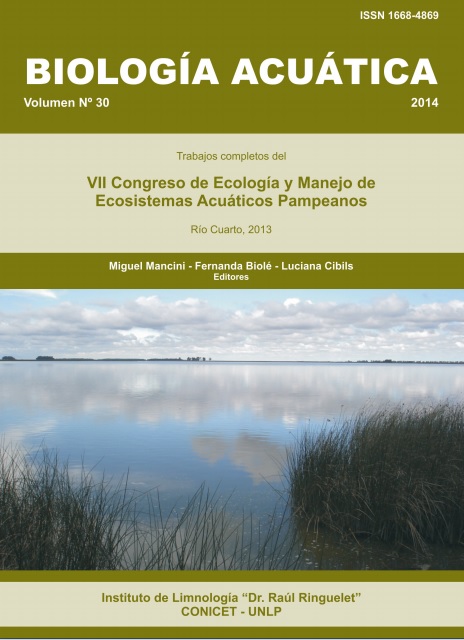Composición taxonómica y variación estacional del zooplancton del embalse Piedras Moras (Córdoba, Argentina)
Keywords:
zooplankton, reservoirs, longitudinal zonation, Piedras Moras reservoir, ArgentinaAbstract
Reservoirs are water bodies relatively similar to natural lakes, differing in aspects such as the longitudinal gradient of certain environmental and biotic factors. In the mountainous region of Córdoba there are more than 15000 ha of reservoirs. Although aspects of these reservoirs have been studied, the zooplankton has generally not received much attention. The aim of this study was to determine the composition and seasonal variation of the zooplankton of Piedras Moras reservoir, a multipurpose reservoir built on the Ctalamochita River, in which this community had not been previously studied. Seasonal samples were taken (November 2009 - September 2010) at three sites. The richness was 20 taxa and the highest diversity was recorded in the center of the reservoir. The typical association of the center-northwest of the country reservoirs was found. The crustaceans Notodiaptomus incompositus, Metacyclops mendocinus, Ceriodaphnia dubia y Bosmina longirostris were recorded in the majority of the samples and, although they were the more frequent rotifers, Brachionus plicatilis, B. dimidiatus, B. caudatus and Polyarthra sp. were found less frequently. In the center, cladocerans were dominant in the summer and autumn, and copepods were dominant in the spring and winter. Though longitudinal zonation was found, this was based only on information from the summer period.





















